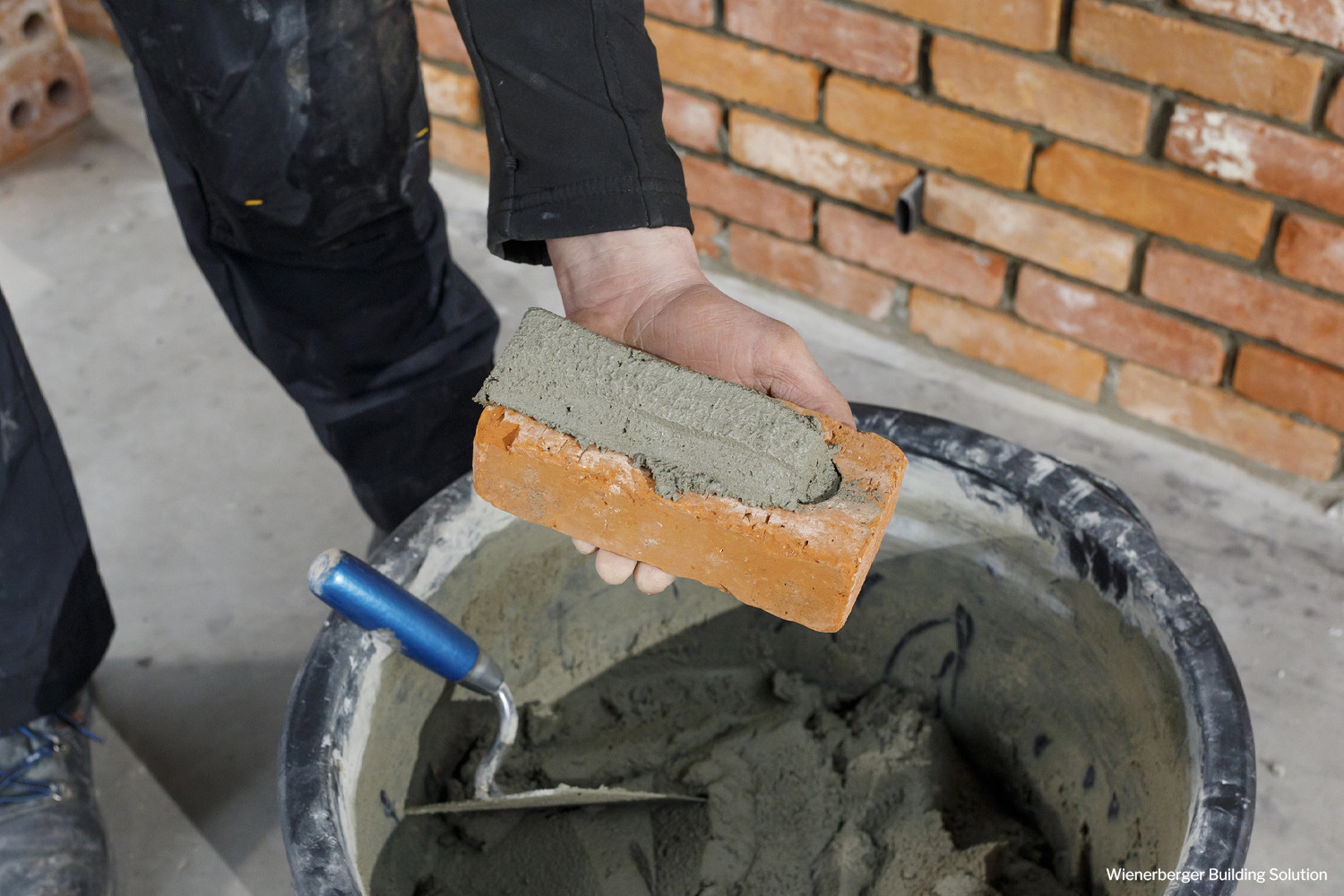Mortars for facing bricks

Mortars for facing bricks, even without efflorescence!
Flattening, thin bricklaying and bonding are three sustainable, economical and, above all, contemporary alternatives to traditional bricklaying and jointing of facing bricks, especially those almost jointless. We have the premium spreading mortar, thin-bed mortar, and adhesive mortar for a professional result. Guaranteed efflorescence-free based on colour and depending on the choice. For a truly colour-intensive facade where the facing brick and joint blend seamlessly tone-on-tone. Or you can boldly apply a different colour to achieve beautiful visual effects.
Related products
Let us help you out
What is the difference between the techniques?
Gluing/thin bricklaying, ironing and normal bricklaying of facing bricks.
- Gluing or thin brickwork: a joint of 4 to 8 mm is created between the facing bricks. The glue or thin-bed mortar (also called thin-bed mortar) is applied recessed (deeper) and the stone is no longer added. Because a thinner joint is created that is not added, the color of the stone largely determines the appearance of the facade. The adhesive mortar or thin-bed mortar is often processed in a color that matches the stone color.
- Traditional masonry: The joint is approximately 12 mm. When laying bricks, the joint determines the appearance. The thinner the joint, the stronger the effect.
- Flushing: This technique involves traditional bricklaying (8-12 mm joint) whereby the colored masonry mortar is also used to finish the joint in one subsequent work pass. It mainly increases returns.
The choice between gluing and thin bricklaying on the one hand and bricklaying or ironing on the other hand is primarily an aesthetic choice.
Is there a chance of efflorescence?
Everyone is familiar with the white or gray rash on masonry. Annoying and not aesthetically pleasing. There are different types of efflorescence: saltpetre, lime efflorescence and gypsum efflorescence. With the use of Omnicol adhesive and thin-bed mortars, the phenomenon of efflorescence on the facade is greatly reduced compared to standard masonry. Always ensure that the guidelines regarding the protection of fresh masonry are adhered to. Do not process mortar at very low temperatures (< 5°C) or during rainfall. In addition, the choice of facing brick is also an important factor in preventing the risk of efflorescence.
Do I have to order my colored mortar in one go?
It is advisable to order colored mortar in one go to avoid slight color differences.





